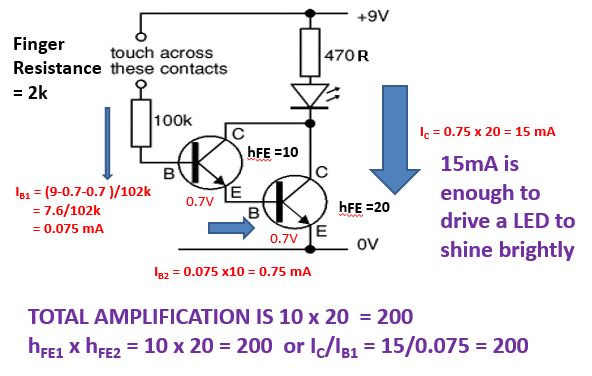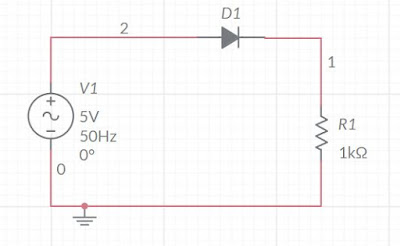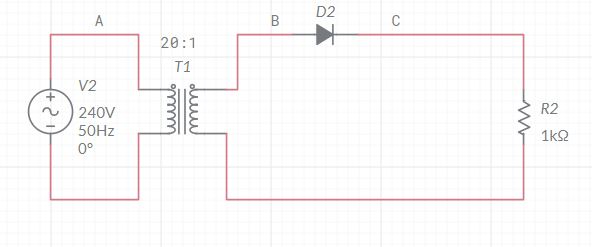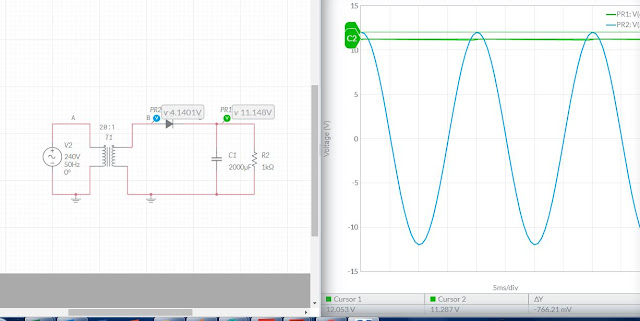Introduction
Transistor is a semiconductor device which is used as an electronic switch and as a signal amplifier. It is a semiconductor device that revolutionized the electronic industry. It replaced vacuum diode that was used in most appliances before the invention of transistor.
 |
| Vacuum tube and transistor |
The disadvantages of vacuum diodes:
- bulky (large in size)
- High power consumption because works on thermionic emission
- Glass tubes are fragile
- Higher operating voltage requirement
- Shorter life span
- Usually lower cost and smaller than tubes, especially in small-signal circuits.
- Lower power consumption, less waste heat
- Can operate on lower-voltage supplies.
- Long life span
There are two main classification of transistor. One is called Bipolar Junction Transistor (BJT) and the other, Field Effect Transistor (FET). In this post only BJT will be discussed.
Bipolar Junction Transistor
Structure and Symbol
There are two types of BJT, one is NPN and the other one PNP. It is made up of two PN junctions connected back to back. The structure of PNP and NPN looks like below.
The symbol of PNP and NPN and their matching structure.
Note that the arrow in the symbol indicates the direction of current flow.
The transistor can be visualized as two diodes connected back to back as shown below.
Some typical features of the PNP or NPN layers
- Base layer is made very thin compared to emitter and collector
- Emitter is heavily doped ( largest carrier quantity), Base is lightly doped ( lowest carrier quantity) and collector has medium doping level.
Transistor applications
Two most fundamental application of transistor is a switch and as an amplifier.
Transistor as Switch
BJT is a current controlled device. The base current controls the Emitter to Collector current. When the base current is zero, the transistor is in the OFF mode. No current will flow in the Emitter to Collector path. When sufficient base current flows then the transistor will turn on and current will flow in the Emitter to collector path.
Transistor as an Amplifier
Transistor can be configured to work as an amplifier, which is to enlarge or magnify the input signal level as shown below.
Low power and High Power transistor
Low power transistor are designed to work with small currents while high power transistors are made to handle large amount of current. Power transistors should be able to handle the heat generated during its operation. Normally power transistors have heat sink to dissipate heat.
 |
| Low power transistors |
Transistors does not produce heat during OFF mode because no current is flowing during this time. During complete ON mode also the heat is not very high because the resistance inside the transistor is small, hence heat loss is small. However during partial ON, the resistance between emitter and collector is quite high and this can produce heat that should be dissipated or else the transistor will melt down.
 |
| High power transistors |
 |
| High Power transistors |
Transistor Operation Modes
Unlike resistors, which has a linear relationship between voltage and current, transistors are non-linear devices. They have three important modes of operation.
Three transistor operation modes are:
- Saturation – The transistor acts like a short circuit. Current freely flows from collector to emitter.
- Cut-off – The transistor acts like an open circuit. No current flows from collector to emitter.
Saturation and cutoff modes are used in switching operation.
- Active – The current from collector to emitter is proportional to the current flowing into the base.
To determine which mode a transistor is in, we need to look at the voltages on each of the three pins E,C and B and how they relate to each other. The voltages from base to emitter (VBE), and from the base to collector (VBC) set the transistor’s mode:
Saturation Mode
In the saturation mode, both the junctions of the transistor (emitter to base and collector to base) are forward biased. In other words, if we assume two p-n junctions as two p-n junction diodes, both the diodes are forward biased in saturation mode. We know that in forward bias condition, current flows through the device. Hence, electric current flows through the transistor.
Cutoff Mode
In the cutoff mode, both the junctions of the transistor (emitter to base and collector to base) are reverse biased. In other words, if we assume two p-n junctions as two p-n junction diodes, both the diodes are reverse biased in cutoff mode. We know that in reverse bias condition, no current flows through the device. Hence, no current flows through the transistor. Therefore, the transistor is in off state and acts like an open switch.
From the above discussion, we can say that by operating the transistor in saturation and cutoff region, we can use the transistor as an ON/OFF switch.
Active Mode
In the active mode, one junction (emitter to base) is forward biased and another junction (collector to base) is reverse biased. In other words, if we assume two p-n junctions as two p-n junction diodes, one diode will be forward biased and another diode will be reverse biased.
Water analogy of Action Mode
In the action mode, the base current IB controls the amount of emitter to collector current. As shown in diagram below, when IB is zero, the plunger closes the path from Collector to Emitter. When there is a small flow in base current, the plunger moves up and allow large current to flow in the emitter-collector path. When the base water/current is increased, a proportional increase occurs in the collector current.
Transistor current flow and current equation
IE = IC + IB
Transistor application examples
A. Switching circuits
A small base current switches a larger collector current. Hence turning on a load.
LED B will glow dimly because only small current is flowing to the base. However LED C will be bright because higher current flow from collector to emitter.
The amplification amount is determined by dc current gain factor:
hFE = IC /IB
Example of hFE calculation
1.
B. Transistor amplification
One simple application where a transistor circuit can be used as an amplifier will be to increase the output from a microphone.
Darlington Pair
Darlington pair is used to achieve very high gain! It comprises of two bipolar transistors that are coupled in order to deliver a very high-current gain from a low-base current. The emitter of the input transistor is connected to the base terminal of the output transistor, base and collectors of these transistors are wired together. Therefore, the current that is amplified by the first transistor and then by the second transistor.
Touch sensor using Darlington pair
Rain sensor using Darlington Pair
Example of Darlington pair calculations
Transistor Configuration
To identify the configuration do the following steps:
- Check to which terminal ( E,B or C) is the input connected
- Check to which terminal ( E,B or C) is the output connected
- The remaining terminal is the common one!
Try to check the type of configuration for the following.
a.
b.
c.
Answer : a. CC b. CE c. CB

































































